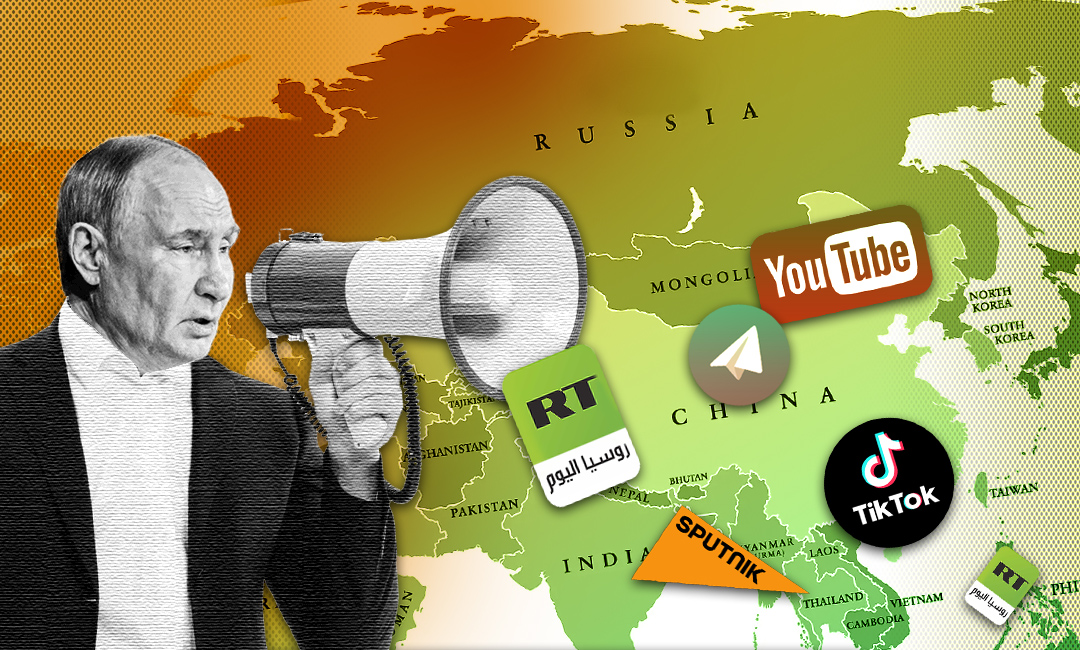NATO StratCom COE Uncovers Russia’s Multi-Layered Propaganda System

The NATO Strategic Communications Center of Excellence (NATO StratCom COE) has released a new study that reveals the fragmented but flexible system of Kremlin propaganda built around official media, television, and a network of pro-Russian Telegram channels.
The Gaze reports on it, referring to the research of the NATO StratCom COE.
The study is based on an analysis of more than 3.6 million Telegram posts, 69,000 official publications, and more than 500 hours of Russian television broadcasts.
The analysis showed that these three components form a collage-like structure rather than a linear one, where each element has its own dynamics, audience, style, and level of controllability. Telegram provides flexibility and responsiveness; official agencies - institutional legitimacy and television - an emotional dimension that shapes public sentiment through historical myths and symbolic images.
“Similar to collages in art, it is an assemblage of different parts that might make sense on their own, but when put together they create a completely new whole,” the study says.
Telegram channels demonstrate considerable autonomy, capable of both disseminating official messages and forming their own variations on Kremlin narratives.
For example, the Russian Ministry of Defense's campaigns on “patriotic education” received limited support on Telegram due to their excessive propaganda, while other topics, such as the destruction of Western armored vehicles, were actively picked up by channels that gave them a more “dynamic” form. In such cases, Telegram does not simply reproduce but amplifies official communication.
Particular attention is paid to the phenomenon of “amplifiers” — Telegram accounts that massively distribute content from state media, even though their own audience may be insignificant.
Such accounts create the impression of widespread support for official messages, increasing their visibility on the network. They often operate on other platforms — YouTube, Facebook, Instagram — without falling under sanctions, thereby expanding the reach of Kremlin messages.
Another key finding concerns the official communications of Russian agencies: the level of attention to the war in Ukraine on official resources (in particular, the Ministry of Defense and the Ministry of Foreign Affairs of the Russian Federation) remains surprisingly low — no more than 20% of content. Most of the messages concern “ordinary matters” — training exercises, conferences, or bilateral relations. Thus, the emphasis on covering the war has been delegated to Telegram, while official channels maintain a formal tone and distance themselves from excessive propaganda.
Weekend television programs, as research shows, play a special role in shaping the emotional narrative. These programs are not always synchronized with official campaigns, avoid overly “technical” topics, and instead focus on emotional stories that support the image of “the greatness of Russia.”
In addition, according to a research by the Centre for Democracy and Rule of Law, Russian disinformation remains resilient even under formal restrictions and continues to influence the local information space in other countries.
In December 2024, Telegram began restricting access to Russian propaganda channels in the EU, but within a few months, much of their content became available again through workarounds. In Poland, as in other EU countries, such materials are distributed through mirror channels, forwarding in closed chats, and the use of local intermediaries.
As The Gaze informed earlier, Russia is dramatically increasing its budget for propaganda despite scaling back military expenditures, underscoring the Kremlin’s growing dependence on information warfare to compensate for its failures on the battlefield.